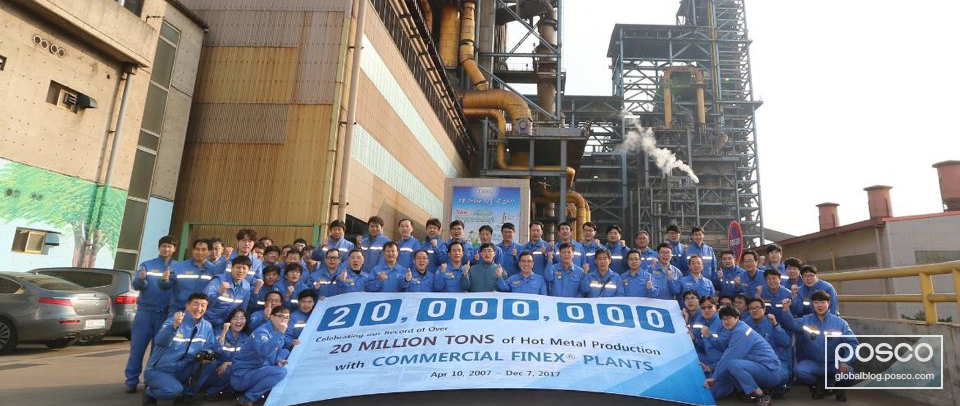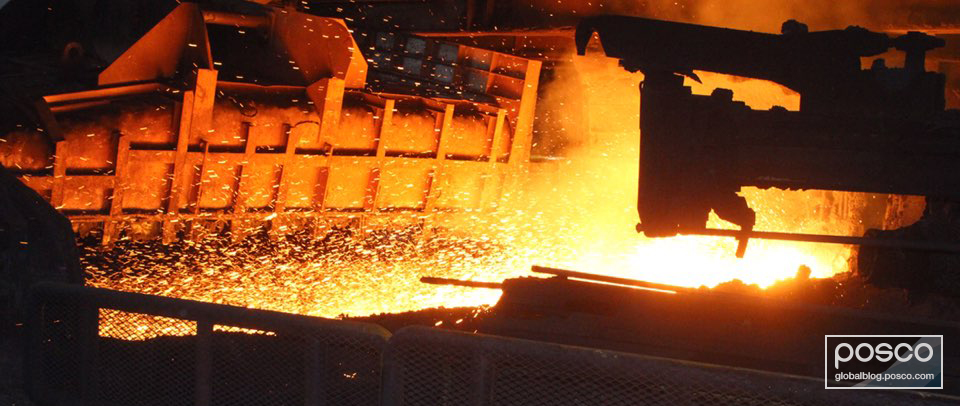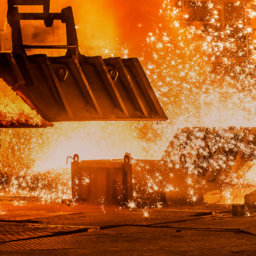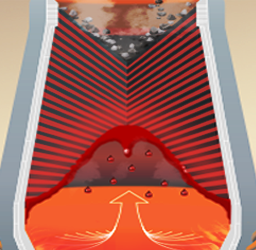POSCO put its first FINEX-based commercial production facilities into operation in 2007, and recently reached 20 million cumulative tons of molten iron production after 10 years and 8 months.
FINEX is an innovative, paradigm-shifting technology where molten iron is produced directly in a blast furnace. The process eliminates preliminary processing and uses cheaper powder-type iron ore and bituminous coal as raw materials. Subsequently, investment and production costs can be reduced by 85 percent compared to those of general blast furnaces of the same size. In addition, the technology reduces SOx and NOx emissions by 40 and 15 percent respectively, and fine dust particles can be reduced by 34 percent compared to general blast furnaces.
The beginnings of the technology date back to the 1990s when the Korean government chose POSCO’s smelting reduction steelmaking for a national project and contributed KRW 22.2 billion for research and development.
As a result, POSCO started operating the FINEX 2 plant with an annual production capacity of 1.5 million tons in 2007, and the FINEX 3 plant with an annual production capacity of 2 million tons in 2014, which now produces 10,000 tons of molten iron every day. Surprisingly, the Korean steel industry, which was heavily reliant on foreign technologies in 1968, now leads the world’s steel industry in terms of technology.
However, the path to success was filled with challenges.
In 1998, objections were raised against additional investment for the FINEX technology because there were no clear, tangible results even after KRW 60 billion was invested. Even so, POSCO management made a decision to construct a demo-plant with an additional investment of KRW 100 billion for technology development in order to secure long-term competitiveness rather than seeking immediate profit.
In addition, POSCO convinced steelmaker Voestalpine, who was in possession of the world’s leading technology for molten iron production, to participate in the project as a partner. POSCO was able to do this by offering to cover the full cost of dispatched researchers and engineers should the technology become successful.
In 2003, there was a slight setback when the newly-opened core FINEX processing facility failed to operate successfully. However, after dozens of tests with 80 in-house professionals over 3 months, the facility was up and running.
Sang-ho Lee, Director in Charge of Commercialization at POIST, said, “With less than 50 years of steelmaking experience, POSCO has managed to achieve a next-generation, innovative steel-producing technology. It feels great because even though POSCO started as a fast follower of foreign technologies, we are now a leading company in the world’s steel industry with our FINEX technology.”
POSCO currently has over 200 patents for its FINEX technology and HCI technology in Korea and 50 patents in more than 20 countries worldwide. Many overseas companies have expressed an interest in FINEX, and POSCO is in talks with world-renowned steelmakers in China to export its FINEX technology.
Don’t miss any of the exciting stories from The Steel Wire – subscribe via email today.






